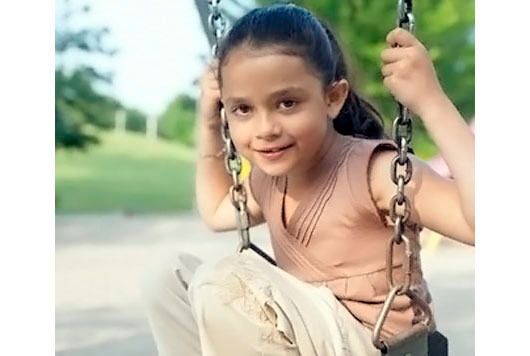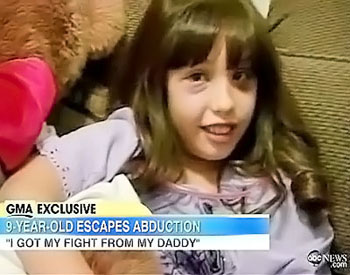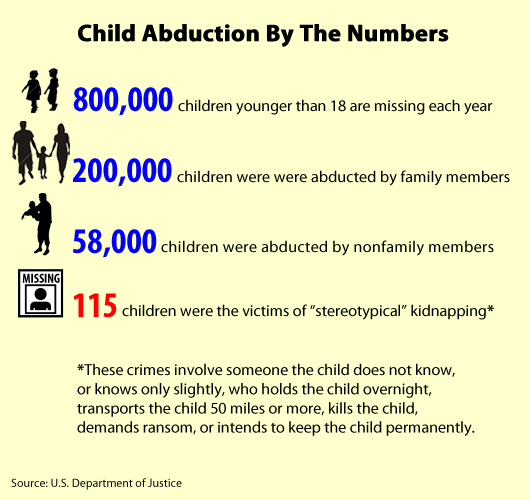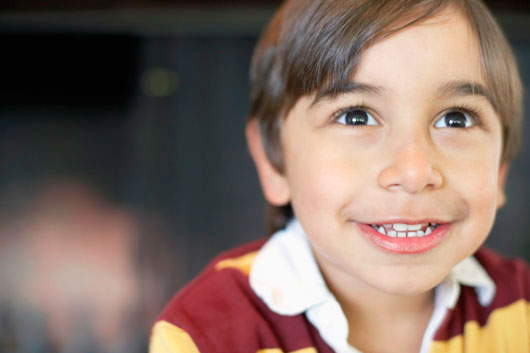
Many of us were amazed by the strength and smarts of 9-year-old Calysta Cordova, the Colorado girl who outsmarted her abductor by calling 911 and making a scene in a convenience store to call attention to her situation. You may recall that it was her next-door neighbor who abducted her when she was walking home from school. The man identified as Jose Garcia kept her for more than 24 hours. When she was rescued, she had black eyes and bruises on her face. Cordova’s natural spunk quite possibly saved her life, thanks in large part to “the fight” she said she learned from her dad who taught her how to stand up for herself.
Read Related: Keeping Your Kid Safe From Predators
We wondered what parents and children could learn from Calysta’s incredible story and turned to child advocate Ross Ellis for advice. First, Ellis, the founder and CEO of Love Our Children USA, a nonprofit and ‘Go To’ prevention organization fighting violence and neglect against children, commended the Colorado 9-year-old. “Calysta Cordova is amazing. She’s a fighter and hero!” Then she offered tips and advice on teaching children how to handle the advances of strangers or potential abductors. While this may seem the most logical and obvious lesson a parent can teach a child, Ellis points out that very often parents are hesitant to speak to their children about abduction or predators because they don’t want to instill fear in them. “Some parents will just tell their kids not to talk to strangers and end it there,” says Ellis. “Or they tell themselves, ‘I’ll just wait until my kids are older’ and then they wind up forgetting to have the conversation.”
 While it’s valuable to teach children about “stranger danger,” as seen in Calysta’s case, abductors are often not strangers at all, a point Ellis is quick to emphasize.
While it’s valuable to teach children about “stranger danger,” as seen in Calysta’s case, abductors are often not strangers at all, a point Ellis is quick to emphasize.
“Predators are not always strangers! They can be a relative, a neighbor, a friend, a teacher, scout leader, coach, doctor, dentist, police officer, bus driver, ice cream truck driver, mailman—any number of people you know. And your child could see them everyday without you even realizing it.” Just this week, a teacher’s aide in Brooklyn who was arrested last month for distributing child pornography, was arrested again, this time after the FBI found videos of him allegedly sexually molesting children at the school where he worked.
ABDUCTION HAS MANY DEFINITIONS
Statistics show that 800,000 children disappear in the U.S. every year. Though this would total about 2,000 a day, how accurate can these numbers really be? Like most crime statistics, abduction numbers are not easy to interpret since a lot depends on whether the crime gets reported in the first place and how “abduction” is defined. For officials, the total number cited includes children whose cases were placed into categories such as: family abduction, nonfamily abduction, runaways, throwaways, or otherwise missing children.
 Calysta Cordova’s case falls somewhere between a kidnapping or a nonfamily abduction, which statistically are not as common a family abductions. According to the Second National Incidence Studies of Missing, Abducted, Runaway, and Thrownaway Children report released by the U.S. Department of Justice in 2002, a nonfamily abduction is when a “nonfamily perpetrator takes a child by the use of physical force or threat of bodily harm or detains a child for at least 1 hour in an isolated place by the use of physical force or threat of bodily harm without lawful authority or parental permission or when a child who is younger than 15 years.” According to the report, “more than 50,000 children and adolescents were taken in this manner in 1999.” Some 65% of the cases were girls, and most were 12 years old or older (58%). Forty-six percent of the victims were sexually assaulted while missing. Most nonfamily abductions last less than a day (91%), with 29% lasting 2 hours or less. Less than 1% of children were not yet returned at the time of the study.
Calysta Cordova’s case falls somewhere between a kidnapping or a nonfamily abduction, which statistically are not as common a family abductions. According to the Second National Incidence Studies of Missing, Abducted, Runaway, and Thrownaway Children report released by the U.S. Department of Justice in 2002, a nonfamily abduction is when a “nonfamily perpetrator takes a child by the use of physical force or threat of bodily harm or detains a child for at least 1 hour in an isolated place by the use of physical force or threat of bodily harm without lawful authority or parental permission or when a child who is younger than 15 years.” According to the report, “more than 50,000 children and adolescents were taken in this manner in 1999.” Some 65% of the cases were girls, and most were 12 years old or older (58%). Forty-six percent of the victims were sexually assaulted while missing. Most nonfamily abductions last less than a day (91%), with 29% lasting 2 hours or less. Less than 1% of children were not yet returned at the time of the study.
And while parents understandably don’t want to instill feelings of paranoia in their children toward non-relatives (who can also be culpable of committing such atrocities), they must be able to empower them with safety tips as soon as their child is old enough to understand, and in a manner that’s both comfortable for the child and the parent. Don’t wait any longer: Aim to discuss with your child how to be cautious as soon as you can. For example, start with discussing scenarios or things that could happen. “Let children know that by simply talking about these safety tips, they will be better prepared and protected,” says Ellis.

HOW TO TEACH YOUR KIDS SAFETY
First, ask your child what they think a stranger is. Then let them know that a stranger is not necessarily a good person or a bad person, the stranger is just someone they don’t know. Tell your child who you trust and believe they can confide in like a trusted parent when you or your spouse are not around. Be sure to name specific names.
- Communicate to your child that if a stranger talks to them that it’s okay to say “I’m not allowed to talk to strangers.”
- Say to them, “If a stranger offers you a ride somewhere, say no, and run away.”
- SHOW your child how to dial 911 and the operator. Be sure to practice to make sure they learn it.
- Create a password that only you and your child know. Explain that no one else can know this password. Parents should only give it to a person they are sending to pick up their child. That way if a stranger or even someone your child knows tells them that there is an emergency, or that a family member is hurt, or that someone has died or had an accident, your child can and should ask what the password is. If it’s the wrong password, they should run away and tell a trusted adult.
- Be sure to practice role-playing with “What if” questions and answers.
- TEACH your child that adults ask other adults for help, they don’t ask kids.
- TELL your child that if anything ever happens to them you will always love them and always look for them no matter how long it takes to find them.
- Have these conversations often and talk about it more as children become age-appropriate.
For more safety tips or helpful illustrations that show kids how to fight back, visit the Love Our Children USA website.










